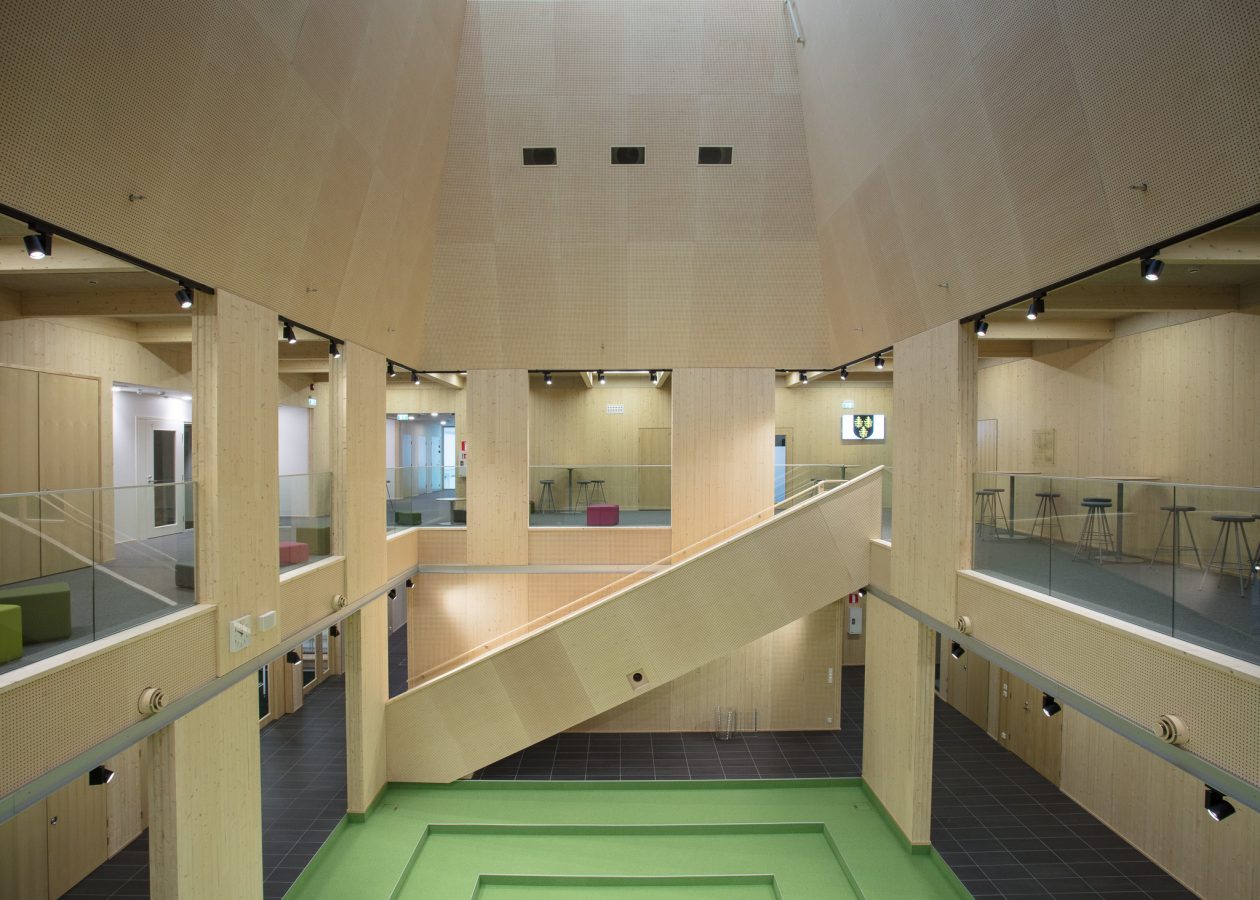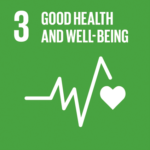Wooden building – A beauty with health benefits?

Blog - Published 5.10.2020
Finns love their wild forests and blue lakes. Therefore, it is no wonder that they have always loved wood as a construction material. The most traditional example is a sauna building made of logs standing next to one of those 56 000 blue lakes. Sauna has achieved a mythical status in Finnish folklore with its healing and calming powers.
Recently, wood construction has come strongly also to public buildings. Below are some examples:
- Tuupala primary school in Kuhmo
- Pudasjärvi Log Campus
- Lapinmäki daycare centre in Helsinki
- Mehtimäki stadium in Joensuu
- “Lighthouse” apartment building in Joensuu
Wood construction industry offers jobs for tens of thousands of Finns. Even more crucial is that it offers employment in Northern and Eastern Finland where there are only few other industrial jobs available. As the size of wooden buildings have grown and public sector has started to use wood, there have appeared companies manufacturing very sophisticated building elements from wood such as cross laminated timber.
The wooden buildings are considered durable, indoor air quality good and appearance beautiful and pleasant. Quite many would accept the statement that living in a wooden building can have health benefits. Despite of that, there is surprisingly little research on how the wooden building environment affects tenants and whether the wooden buildings really have health effects.
In a laboratory environment, untreated wood has been found to have strong antimicrobial properties, and wooden surfaces to have good acoustic properties. Wood material has also been found to moderate variations in both temperature and humidity. A wide variety of natural volatile organic compounds evaporate from wood, although only little from a building older than a year. Do those factors produce potential health effects? Or how could these be explained?
Tuupala primary school
Wood construction is studied in several Finnish universities and research institutes: Aalto University, Lappeenranta-Lahti University of Technology LUT, Natural Resources Institute Finland, Tampere University, University of Eastern Finland, University of Helsinki, University of Oulu and VTT Technical Research Centre of Finland. During 2020 Kajaani University Consortium (University of Oulu) is conducting a pioneering research project regarding health benefits at the Tuupala primary school in town of Kuhmo.
The Tuupala primary school was completed as a demonstration of Northern expertise at the end of year 2017. It is Finland’s first school built with solid wood element technology and offers workspace for nearly 400 students and over 30 teachers. It was awarded the Best Construction Work in Northern Finland in 2017 and National Wood Award in 2018.
The factors that have been suggested to be behind the health effects are investigated. For example, the amounts of volatile compounds and microbes will be analysed, as well as noise and stress, temperature, humidity, carbon dioxide and fine particles. The sick leaves of school children are monitored widely in the regional schools. There is also a non-wood reference school included in the study by the same architects than Tuupala. The sole purpose is not to compare schools, but to produce a comprehensive database of Tuupala primary school conditions using standard methods that can also be used in other studies to measure buildings. Similarly, the effect of season, day of the week, and weekly curriculum at school on stress will be evaluated in addition to potential effects of built environment. The final report of the research project is planned to be published in April 2021.
We, as researchers, do not suggest that the study would solve and demonstrate conclusively what is behind the health benefits of wooden construction. Instead, we truly hope that we would be able to obtain indications and create practices that could be followed by other researchers. Then, who knows, maybe one day Finns sitting in their sacred sauna beside the lake, could explain to their foreign visitors that we have known the health benefits of sauna for centuries, however, it is not only soft heat and moisture but also the wooden building. Then the Finn would throw some clean water on the stones, enjoy the steam for a moment, and run to the blue lake basking in the golden midnight sun.
Agenda2030
This project contributes to UN Sustainable Development Goals 3 Health and Wellbeing and 13 Climate Action. Wood construction diminishes carbon footprint of construction industry. The presented study measures the well-being of schoolchildren in three different environments and seeks to tentatively identify the factors that influence it. The results of the research also disseminate information on wood construction internationally, increase its awareness and may also support the choice of wood in public construction as the choice of wood as a building material.


